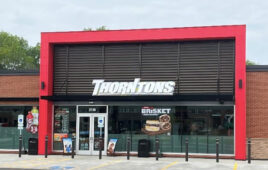I was sitting in my office the other day ruminating that with the recent letter of intent we had just received, I was about to be a man without a jobbership to sell. Fortunately, the phone rang.
On the other end of the phone was a marketer friend who recently sold his retail chain and was planning on growing his dealer wholesale business. After about a year of running this remaining business, he came to the conclusion that given his age, other business pursuits and the challenges to build volume, the best course of action was to exit the industry.
He is not alone. In fact, we have recently seen a sudden upswing in the number of dealer-focused marketers who have decided to sell. In the not-so distant past, dealer supply volume wasn’t garnering either the interest level or value to motivate a marketer to sell. However, due to oil company volume emphasis, real estate costs and the highly competitive retail environment, distribution business values have now increased.
This exit trend prompted me to recall the accelerated development of the c-store industry in the early 1980s, fueled by oil company eradication of conventional service stations. During this time, the convenience industry experienced a convergence of two distinct groups: grocers gravitating to fuel and oil jobbers to a grocery orientation.
Today, this early business orientation of either fuel or grocery still manifests itself with a surprising number of marketers around the country. Quality operators have a distinct grocery orientation, and marketers that wouldn’t think of running a store build revenue through one of several dealer supply business models.
The challenge for marketers when they eventually decide to exit is to ensure that their respective businesses are positioned to yield maximum value and return. Thus, an early understanding of one’s core business competencies is essential to help direct the enterprise toward an optimum level of business development, preparation and value.
Given this new fuel distribution emphasis, a new breed of marketer has emerged that we call volume aggregators. They have less interest in acquiring dealer-leased fee properties than in acquiring quality dealer contracts to help them push volume past one hundred million volume hurdles. The challenge is preparing the business to attract these folks and compel them to pay top dollar. Here are a few tips to employ to set the stage:
Dealer contracts: Tighten up agreements before you decide to sellcash flow multiples are hard to justify with handshake agreements. File supply contracts in an orderly fashion to facilitate easy review. If you deliberately maintain handshake agreements in lower competitive situations to offer DTW supply from time to time and enhance margin, document these situations and be prepared to defend them. A volume retention clause may be added to a sales contract that remits part of the sales proceeds in 6, 12 or 18 months based on the amount of handshake volume retained.
Dealer arrangements: Some marketers work off a standard rack plus formula, others a fuel consignment model and others offset tight supply agreements with equipment considerations. In that instance, it is recommended that equipment consideration be limited to above ground equipment only. Any in-ground arrangements should be transferred to the dealer in advance of a sale. Dealer arrangements that offer a marketer a first-right-of-refusal on site in the event of a sale by the dealer are a plus.
Dealer leased real estate: Leased real estate value is formulated on the traditional multiple of cash flow approach. This usually translates into two primary revenue streams: rent and supply margin. Rents need to be commensurate with actual real estate values and lease terms to optimize value. Sites with easily terminating dealer agreements are attractive for many buyers that operate under either salary or new American dealer models. However, sites with tight leases may be more attractive to volume aggregators. It’s important to determine potential primary buyers in advance.
Dealer volume has never been more attractive and times have never been better for wholesale marketers considering exiting the industry. The challenge is to set the stage to insure optimum value and return when the time comes to pull the trigger.
Mark Radosevich is president of PetroProperties & Finance a firm that specializes in mergers, acquisitions, financing and strategic business services exclusively to the petroleum industry. He can be reached at (305) 667-0855 x 3 or by email at mark@ petropropertiesandfinance.com.




